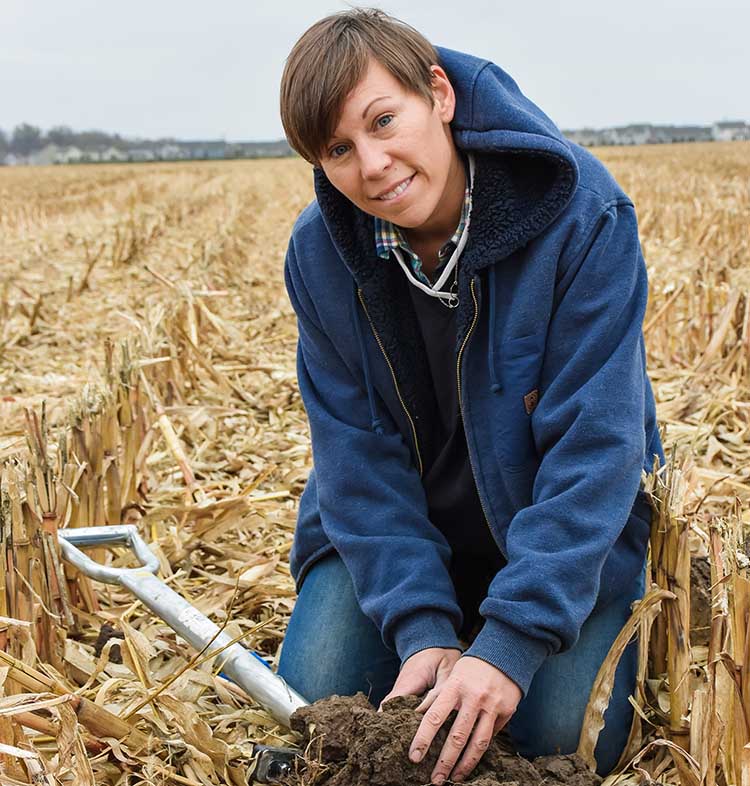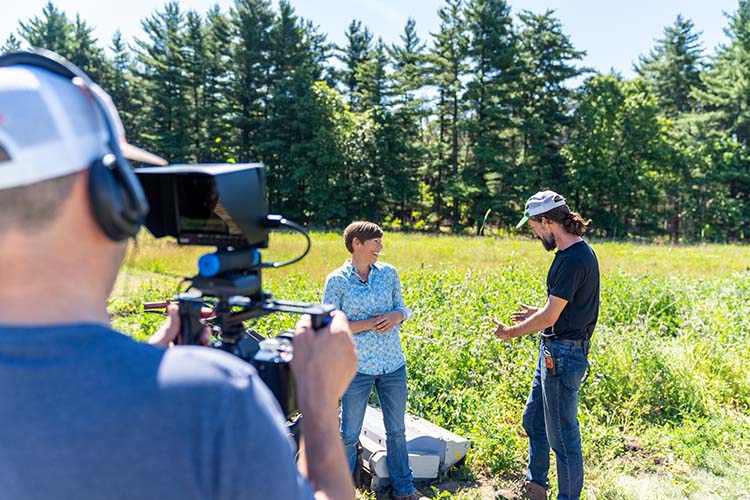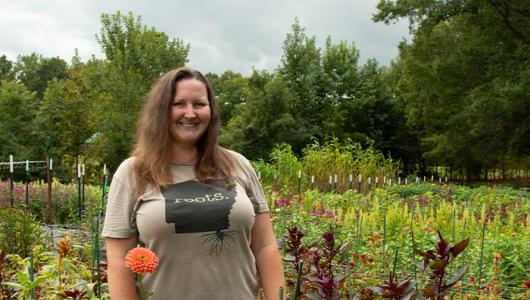In this Ask the Expert, Stephanie McLain, state soil health specialist for USDA’s Natural Resources Conservation Service in Indianapolis, Indiana, answers a few questions about how to improve soil health, drought resistance and other benefits by adding cover crops to your operation.
Stephanie works with Indiana farmers, conservation partners, NRCS staff, agronomists, and others to educate them about the benefits of soil health. She provides technical assistance on cover crops, no-till, crop rotations, soil function and other topics related to building soil health systems on agricultural land.
Why plant cover crops?
The reasons can be as simple as erosion control or compaction issues. Or it can be as complex as wanting to improve your farm for the next generation. Farmer’s reasons may also change from season to season. But by using cover crops consistently over time, you will maximize a suite of benefits including soil health, erosion control, reduced compaction, improved nutrient cycling and better water infiltration.

What should you consider before planting cover crops?
The list of considerations can feel overwhelming to someone staring out with cover crops. NRCS can help you think through those considerations. Here is just a brief list of things to think about:
- What is your current and next year crop?
- What type of weed pressure does the field have?
- What herbicide(s) have you used? (Be aware of residuals and carry over.)
- What are the moisture conditions at time of cover crop planting and termination?
- Which cover crop to plant?
- When and how should you plant the cover crop?
Cover crops can help farmers reach many different goals from improving soil health to providing livestock forage. How do you determine which cover crop or cover crop mix to use?
Before recommending what cover crop to plant, I visit the farm to get a good understanding of site-specific conditions. Then I can match the crop recommendations to each situation. For example:
- High biomass cover crop species, like cereal rye, are great for erosion control, building organic matter and controlling weeds.
- Fibrous plant roots, like oats, cereal rye, annual rye grass and sorghum sudan grass, do a great job of holding soil aggregates together, especially in the top 12 inches of soil. These roots help to control erosion, sequester carbon and facilitate nutrient cycling by pumping lots of carbon into the soil to feed soil microbes.
- Deeper tap roots, like radishes, help to address compaction and build organic matter.
- Legumes like clovers and field peas can add nutrients to the soil and lower the carbon to nitrogen ratio of your cover crop biomass.
- If you need to feed livestock, cover crop palatability and grazing quality are important to consider.
A good source for information for cover crops and their uses is Managing Cover Crops profitably, a book produced by SARE.

What is a good strategy for adding cover crops to your cropping system?
No matter how much you prepare, Mother Nature can make it difficult or impossible to implement as you planned. That is why when putting your cover crop program together we always recommend having backup plans and suggest taking a multi-season approach.
I recommend starting small and learn each step of the process one at a time. Choose a cover crop that winter kills when your start. Then expand your acres as your experience and comfort level increase.
Be patient and stick with it. You didn’t stop growing corn the first time you had poor emergence, or a drought affected your yields. Learn why something didn’t work instead of simply blaming the cover crop. A mentor or NRCS can help you.
How does NRCS help farmers plant cover crops?
We provide guidance on what, when and how to plant cover crops through publications, web resources and one-on-one field visits. These recommendations are based on the farmer’s goals, their site conditions and any resource problems that may need to be addressed.
NRCS conservation programs are also a major resource for helping farmers plant cover crops. This financial assistance helps mitigate risk while a farmer learns how to fit a new practice, like cover crops, into their operation. Our top two financial assistance programs are the Environmental Quality Incentives Program (EQIP) and Conservation Stewardship Program (CSP).
You can learn more about cover crops through this short video and by contacting your local NRCS field office.
Laura Crowell is a regional public affairs specialist for USDA’s Farm Production and Conservation Business Center serving states in the Northwest and Northern Corn Belt.


